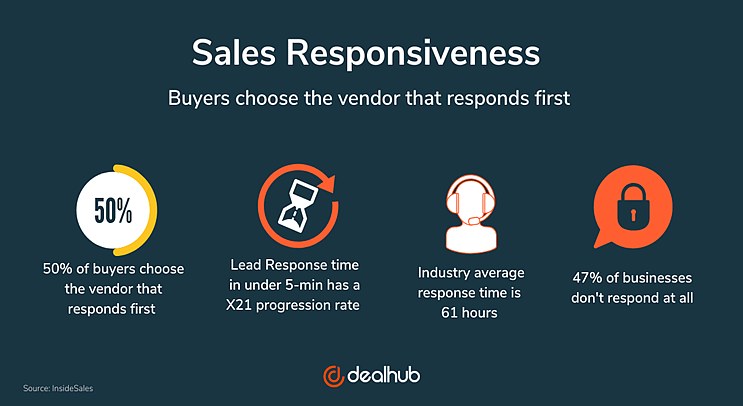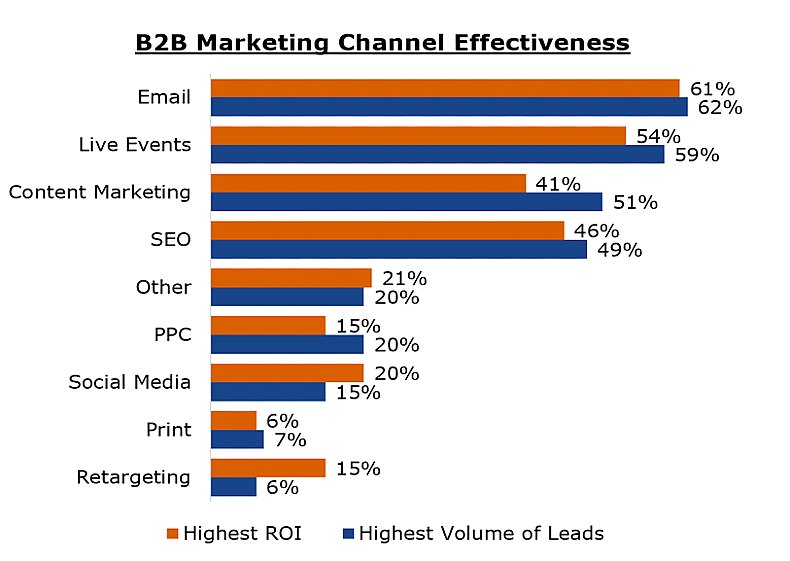Running a B2B business is challenging when your clients are few and your competition is plenty. Only the best are able to achieve those coveted high conversion rates—convincing other companies to make a business a part of their vendor pool.
The journey to converting a prospective customer into a client is a long one, marked by multiple discussions. And because of the high value and long-term commitment, B2B sales tend to have lower conversion rates than B2C.
Getting enterprise clients onboard requires planning and a highly targeted approach.
Seven Sales Metrics for a Better Marketing Strategy
In this article, I'll be spotlighting B2B sales metrics that can help you crack the coveted 10% conversion rate. Data is your best friend, so make sure you use insights from these metrics to boost your marketing strategy.
1. Customer Acquisition Cost (CAC)
Before you can build an effective marketing strategy, you have to know how much it costs to add more clients to your business. Your goal should be to keep the number low because that implies that your strategies are working and you have to spend less money to get customers.
You can calculate CAC by taking the total sales and the marketing costs for a certain period and dividing that by the number of new customers you have added during the same period. For example, if you spend $1,000 on marketing costs in one month to acquire 100 customers in the same period, your CAC is $1,000/100, or $10.
2. Conversion Rate
Conversion rate is probably the most important sales metric you'll be tracking. It gives you the proportion of actual purchases or subscriptions to the number of leads, site views, visitors, posts, or emails it took you to get those conversions out of your sales pipeline.
Conversion rate is particularly useful in determining the effectiveness of your marketing efforts. Let's say you use a combination of email marketing, social media, and cold-calling to announce a product launch. Divide the number of conversions (or purchases) you get from each channel by the number of emails, social media posts, and calls you make to see which channel works best for your niche.
3. Sales Pipeline Velocity
The sales pipeline is the entire sales process, starting when you make the first contact with the buyer and continuing until the deal closes.
You can compare the sales pipeline to a boat race. The speed of a boat is the amount of distance it travels over a specific period of time: When your boat goes 20 feet in 2 seconds, its velocity is 10 feet per second. Considering that the average rowboat has a velocity of just under 9 feet per second, your boat (and the rowers and the equipment they use to row it) is pretty fast.
Sales pipeline velocity applies the same logic to your sales and marketing process.
Since your sales process has a lot of moving parts, calculating the pipeline velocity will be a bit more complicated. To calculate the sales pipeline velocity, use the following formula: SPV = (Number of leads * Average deal value * Win rate) / Sales cycle in days.
You want that SPV number to be as high as you can.
The longer your sales cycle is (as is the case for B2B businesses compared with B2C), the more you need to compensate with a higher number of leads, a better win rate, or a higher average deal value.
For example, if you want to maintain a sales pipeline velocity of $10,000/day and you have just a few leads per sales cycle, you need to either close more high-value deals or shorten your sales cycle.
4. Average Lead Response Time
You know where your leads are coming from, but what happens once they're in your sales funnel? Is your sales team responding on time? That's what average lead response time measures.

Source: InsideSales
The early bird does get the worm, so your sales team should ideally follow up within minutes. Half of all prospective customers choose the business that responds first, a study by Dealhub estimates. Don't go by the industry standard of 61 hours; you'll lose a huge percentage of your leads that way.
Use an efficient email workflow system that sends queries to the right person and—just as important—stays on top of any social media inquiries. Your B2B Web design agency should be able to help you set up a process with email notifications, as well as a live chat system that allows site visitors to connect with a representative immediately.
5. Customer Lifetime Value
You have a new customer, and your sales funnel is working fine. But are new clients staying with you? Customer lifetime value (CLV) is a metric that shows whether your marketing efforts are going beyond the immediate gain of new clients and contributing to long-term growth.
You can calculate CLV by multiplying the average length of time a client is with you with the money they spend on your business in each period. You want that number to stay high, because it means you are retaining your clients. For example, if a client spends 10 years with you and spends an average of $1,000 each year, the CLV would be $10,000.
CLV is an important metric to consider because client retention is as necessary as client acquisition. If you spend time on acquiring new clients while your existing clients leave in droves, you will always be pumping money through your sales funnel and your CLV will remain low.
6. Win Rate
I mentioned win rate earlier in this article, in reference to sales pipeline velocity. A lot of people confuse the two; however, though win rate and sales pipeline velocity are related, they are not the same thing.
Unlike sales pipeline velocity, which considers average deal size and length of the sales cycle, the win rate is a much simpler metric: Divide the number of wins you've had for a specific period by the total number of sales opportunities during the same span of time, whether or not they were successful.
Win rate is particularly useful for comparing your sales performance between two or more periods or market segments. For example, you might find that you have a higher win rate for widgets on Black Friday and Cyber Monday compared with the week after Christmas, or that you sold more lawn mowers per head among suburban customers compared with those who live in apartments.
Win rate helps you identify the times when and the areas where you're most likely to make a sale, as well as the sectors or seasons during which you should promote your product more extensively.
7. Lead Source
This important sales metric helps you know more about the source of your lead generation and the amount it contributes to your revenue.
For a B2B business, the average conversion rate hovers around 10%. It's a small window of success, so your marketing must be targeted, and you must invest in the right channel. For many companies, email marketing—a 62% conversion rate—is an effective way to generate quality leads.

Source: Venture Harbour
Track the source that lands you the most sales opportunities to figure out your strengths and also where you need to improve.
Once you have that data, you can further divide it up by how much revenue each source generates. The data will help you get a better return on investment. Knowing the expected revenue from each source also gives you a benchmark to measure your efforts' success against.
Track your primary sources of leads, such as inbound marketing, paid search, and sales development efforts, so you understand which prospects are coming from where.
Once you know which sources are pulling in prospective buyers, it becomes easier to track results and measure the investment return from those sources. It also helps you allocate your funds towards the acquisition source that is bringing in the most interested buyers.
The Insight of Sales Metrics
Metrics allow you to look more closely at your practices and identify where you are going wrong—and what you're doing well!
All businesses, whether B2B or B2C, have to know who their buyer is, where they can reach that person, and what the person wants. The previously listed B2B sales metrics will help you answer those questions while also giving you insight into your sales funnel and how it is functioning.
Use those data insights to polish your marketing strategy, and you'll watch your client numbers climb higher and higher.
More Resources on Sales Metrics
Take 10: Three Sales Metrics Marketing Should Own
Advanced Measurement Strategies: Metrics That Actually Matter
Nine Key Sales Pipeline Metrics for Healthy Sales [Infographic]




